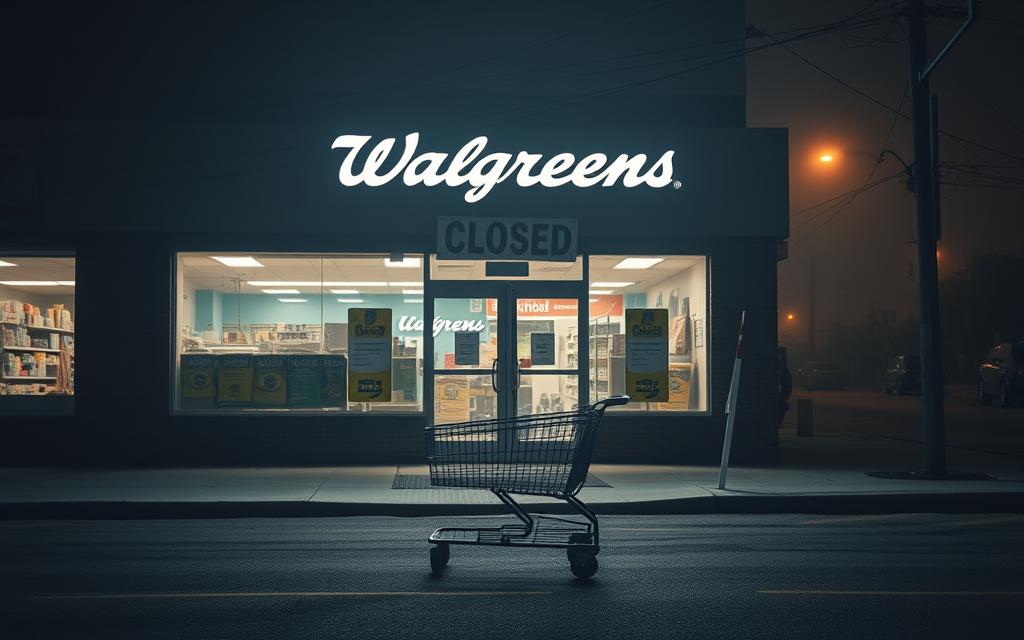The retail pharmacy landscape is undergoing significant changes, and Walgreens, a stalwart in the industry, is at the centre of speculation regarding its viability.
In October 2024, the company announced plans to close 1,200 stores over the next three years, following a substantial net loss of $3 billion in its fourth quarter.
This drastic measure has sparked concerns about the future of Walgreens and whether it is truly restructuring or heading towards demise.
The “Footprint Optimization Program” is a key component of Walgreens’ strategy, aiming to streamline operations and mitigate financial strain.
As the situation unfolds, it is crucial to assess the impact on communities and the implications for customers.
The Current State of Walgreens
Walgreens is undertaking significant restructuring efforts to remain competitive in a rapidly evolving retail landscape. With over 8,000 stores across all 50 states, the company maintains a substantial presence in the American retail pharmacy sector.
Recent Financial Performance
Walgreens has faced financial challenges, prompting the company to consolidate its stores. According to recent reports, the drugstore chain is working to improve its financial performance by optimizing its operations and focusing on core competencies. “We are committed to strengthening our business and improving our competitiveness,” a spokesperson noted.
Store Presence Across the United States
The company’s extensive network includes a range of store formats, from small neighbourhood pharmacies to larger locations offering a broader range of retail selections and healthcare services. Walgreens locations are found in prime areas with high foot traffic, although this strategy is being reevaluated as part of the current restructuring efforts.
Despite the challenges, Walgreens remains a significant player in the retail pharmacy chain, with thousands of locations nationwide. The company continues to adapt to the changing retail environment, ensuring its presence in most American communities.
Understanding the “Footprint Optimization Program”
Walgreens’ strategic shift involves a comprehensive ‘Footprint Optimization Program’. This initiative is a response to the changing retail landscape and aims to optimize the company’s store presence.
What the Program Entails
The “Footprint Optimization Program” involves the closure of approximately 1,200 stores over the next three years. This includes 500 stores in the current fiscal year ending on August 31, 2025. The program is designed to streamline Walgreens’ operations and improve efficiency.
Timeline for Store Closures
The store closure program is spread over three years, starting from fiscal year 2025 to fiscal year 2027. The most significant number of closures is happening in the current fiscal year, with nearly half of the total planned closures scheduled by August 31, 2025.
| Fiscal Year | Number of Store Closures |
|---|---|
| 2025 | 500 |
| 2026 | 400 |
| 2027 | 300 |
| Total | 1,200 |
The phased approach allows Walgreens to assess the impact of each wave of closures before proceeding with subsequent rounds. Local communities typically receive notice of specific store closures several weeks to months in advance.
Is Walgreens Going Out of Business? The Reality
Walgreens’ recent moves have sparked debate about its viability, prompting a closer look at the reality of its situation. The retail pharmacy giant has been undergoing significant changes, including store closures and financial adjustments, which have raised concerns about its future.
Differentiating Between Restructuring and Collapse
It’s essential to differentiate between restructuring efforts and a complete collapse. Walgreens is implementing a comprehensive strategy to stabilise its business, which includes optimising its footprint and improving cash flow. This approach indicates a restructuring effort rather than a collapse.
CEO Tim Wentworth’s Turnaround Strategy
CEO Tim Wentworth’s turnaround strategy is focused on stabilising Walgreens’ core retail pharmacy business. As he stated, “This turnaround will take time, but we are confident it will yield significant financial and consumer benefits over the long term.” The strategy includes controlling operating costs, improving cash flow, and addressing reimbursement models to support dispensing margins, ensuring the company remains a vital healthcare provider in communities.
Regions Most Affected by Closures
Walgreens’ ongoing optimisation programme has resulted in the closure of nearly 300 stores across the country, with various regions being impacted differently.
California: The Hardest Hit State
California has been the most affected, with a significant number of Walgreens closures reported.
Massachusetts and Colorado Closures
Massachusetts and Colorado have also seen substantial Walgreens store closures as part of the company’s restructuring efforts, affecting numerous locations.
Other Significantly Impacted States
Beyond these states, other areas have experienced considerable closures, with the overall impact spread across multiple states.
Why Walgreens Is Closing Stores
Several key issues are driving Walgreens’ store closure programme. The decision to close stores is not taken lightly, and it is essential to understand the underlying factors.
Prescription Reimbursement Pressures
One significant factor is the pressure from prescription reimbursements. According to Patrick Aguilar, managing director of health at Washington University’s Olin Business School, Pharmacy Benefit Managers (PBMs) have “grown to represent a significant negotiating challenge for retail pharmacies.” This has resulted in reduced revenue for Walgreens, contributing to the need to close stores and reduce costs.
Broader Retail Industry Challenges
The rise of online shopping has significantly impacted sales of non-pharmacy products, which once accounted for approximately 40% of revenue for large pharmacy chains like Walgreens. Over the past 25 years, consumer shopping habits have fundamentally changed, posing a substantial challenge to the retail sector. A comparison of the challenges faced by Walgreens is shown in the table below:
| Challenge | Impact on Walgreens |
|---|---|
| Prescription Reimbursement Pressures | Reduced revenue due to lower reimbursements |
| Rise of Online Shopping | Decline in sales of non-pharmacy products |
| Increased Competition | Compressed margins on non-prescription products |
These combined pressures have created a “perfect storm” of financial challenges for the drugstore chain, necessitating the current wave of store closures and restructuring. As a result, Walgreens is adapting to the changing retail landscape by optimising its store presence across the United States, focusing on locations that are more viable in the long term.
Impact on Communities and Customers
As Walgreens continues to close stores, the effects on community health and customer access to essential services are becoming increasingly apparent. The loss of these pharmacies can have far-reaching consequences for local populations.
The Growing Concern of “Pharmacy Deserts”
The closure of Walgreens stores contributes to the growing issue of “pharmacy deserts,” where communities lack access to pharmacies and the healthcare services they provide. Rural areas and low-income communities are particularly affected, exacerbating existing healthcare disparities.
How Vulnerable Populations Are Affected
Vulnerable populations, including the elderly and those with chronic health conditions, rely heavily on local pharmacy services. The closure of Walgreens stores disrupts their access to essential healthcare services and advice from pharmacists. According to experts, this can lead to gaps in care and reduced medication adherence among these groups, who often rely on these services for their prescriptions.
| Impacted Group | Effects of Store Closures |
|---|---|
| Vulnerable Populations | Reduced access to healthcare services and medication |
| Rural Communities | Increased travel times to access pharmacy services |
| Low-Income Communities | Exacerbated healthcare disparities due to lack of access |
What Happens to Your Prescriptions
As Walgreens continues to optimise its store footprint, customers are left wondering what happens to their prescriptions. The company has put in place measures to ensure continuity of service for its customers.
Prescription Transfer Process
Customers can transfer their prescriptions to another Walgreens location using the company’s store locator tool or through their website and mobile app. This process is straightforward and can be completed online or with the assistance of a pharmacist.
Alternative Service Options
Walgreens offers several alternative service options, including prescription delivery and 90-day refills for eligible medications. Most prescriptions are eligible for delivery, although certain medications may be excluded. Customers can also manage their prescriptions remotely through the Walgreens website and mobile app.
According to the company’s Rx Delivery policy, eligible prescriptions can be delivered to customers’ homes. Additionally, customers can request a 90-day supply of their medication, reducing the frequency of pharmacy visits and potentially offering copay savings. For those who prefer in-person service, Walgreens’ store locator tools can help identify the nearest alternative locations.
Conclusion: The Future Outlook for Walgreens
Walgreens is implementing a multifaceted strategy to drive value creation and stabilise its retail pharmacy operations. As stated by CEO Tim Wentworth, fiscal year 2025 is a critical “rebasing year” for the company, laying the groundwork for a more focused and financially stable operation in the years ahead. Although the closure of 1,200 stores represents a significant contraction, the company will still maintain thousands of stores nationwide, continuing its position as one of America’s largest drugstore chain. The success of this turnaround strategy will be crucial in determining Walgreens’ future viability.














